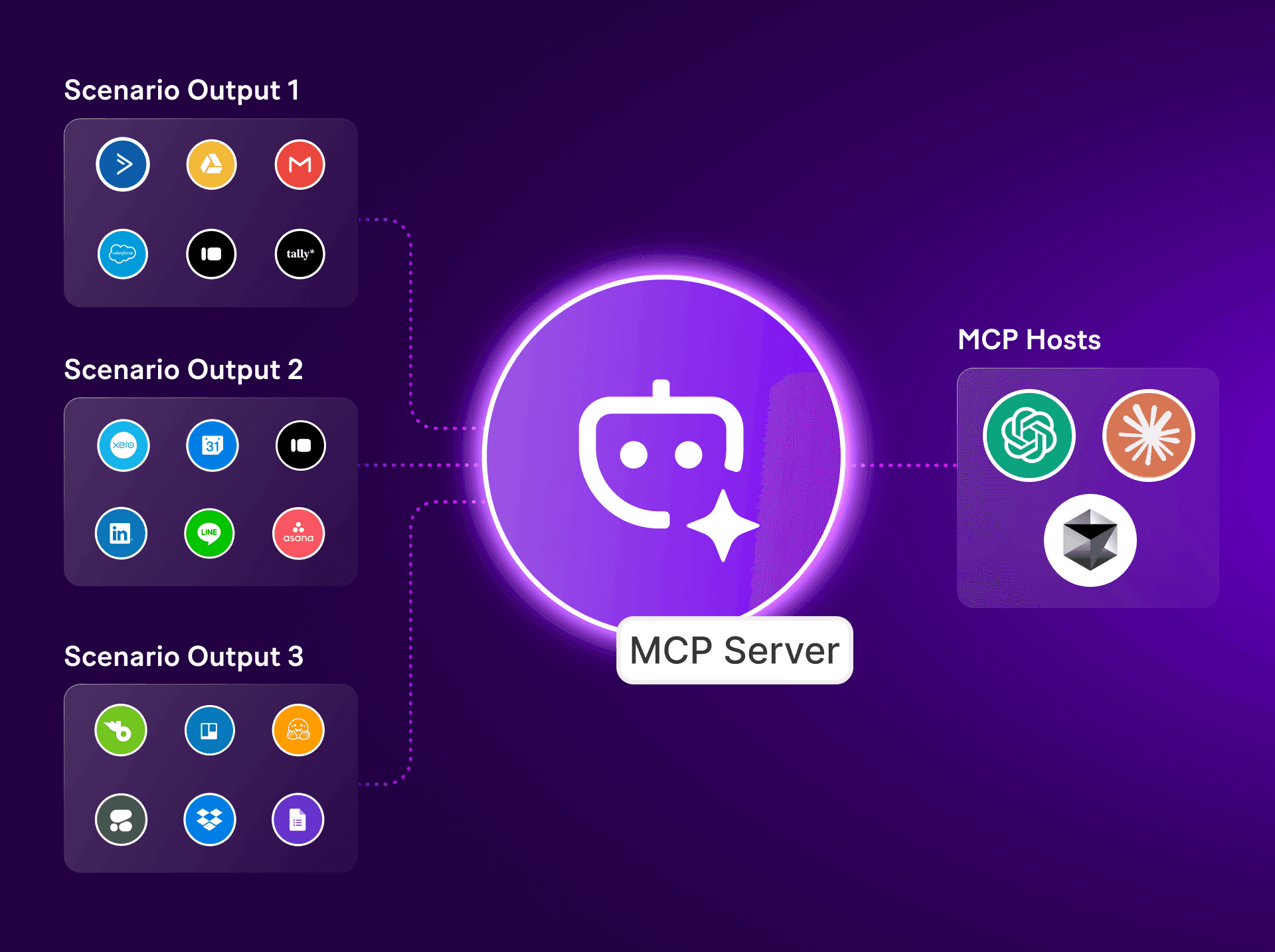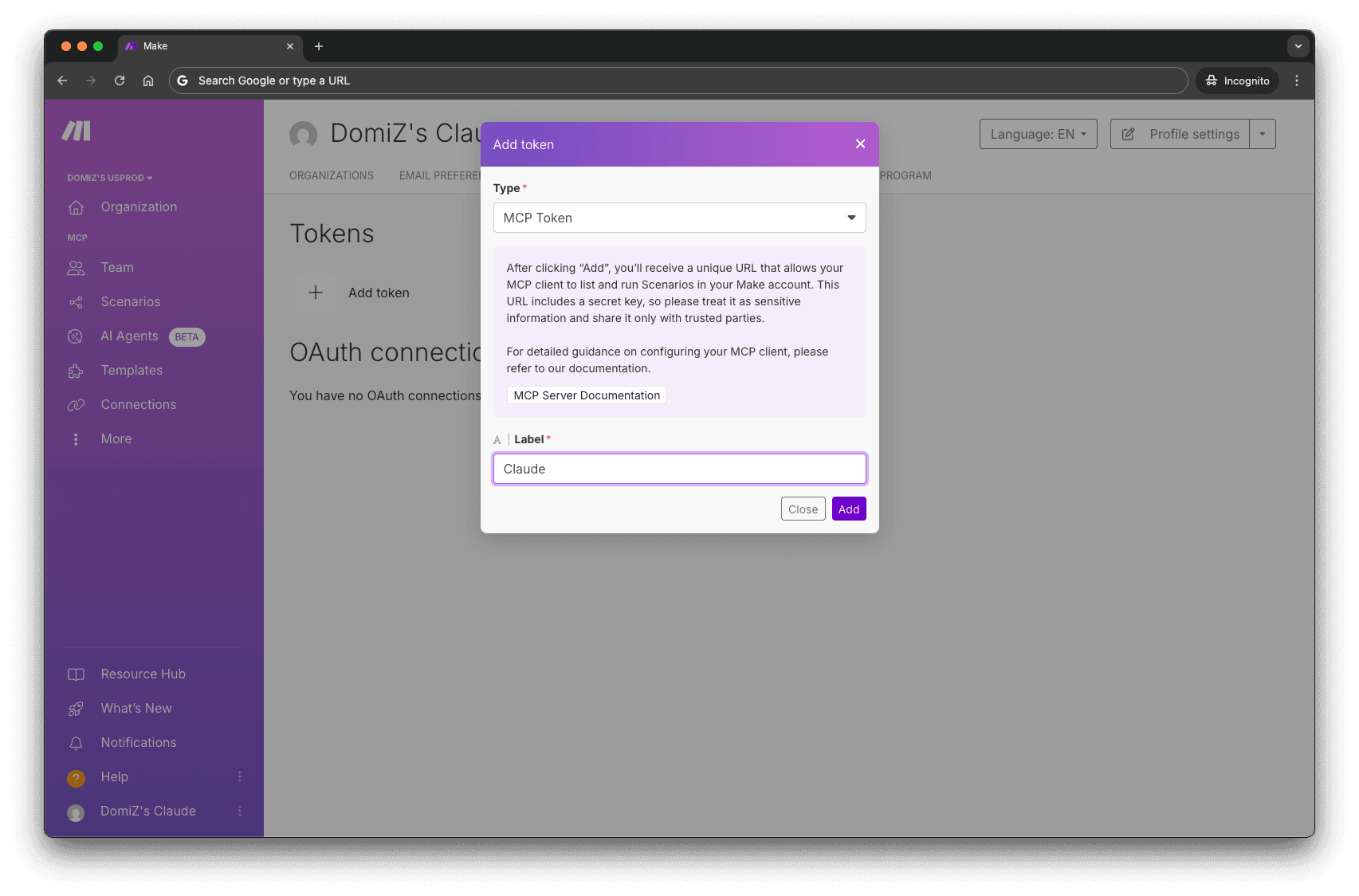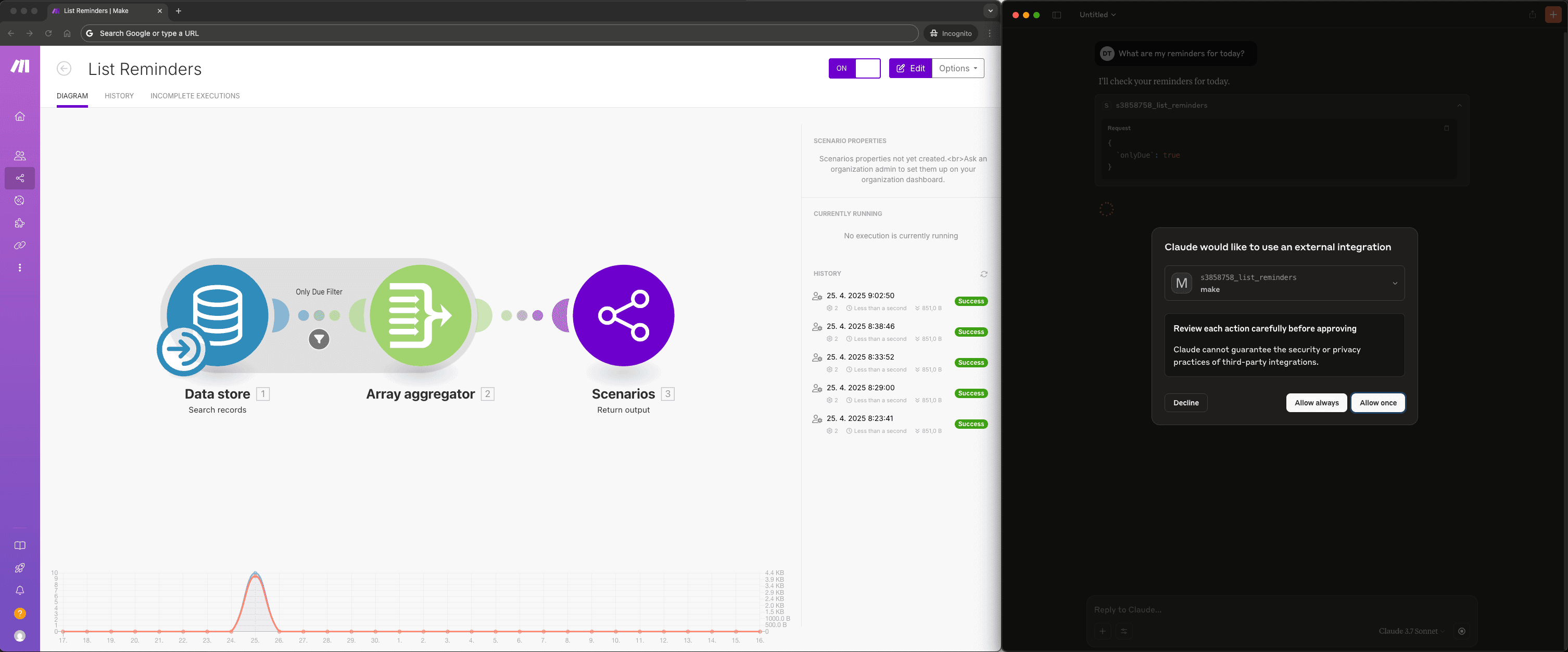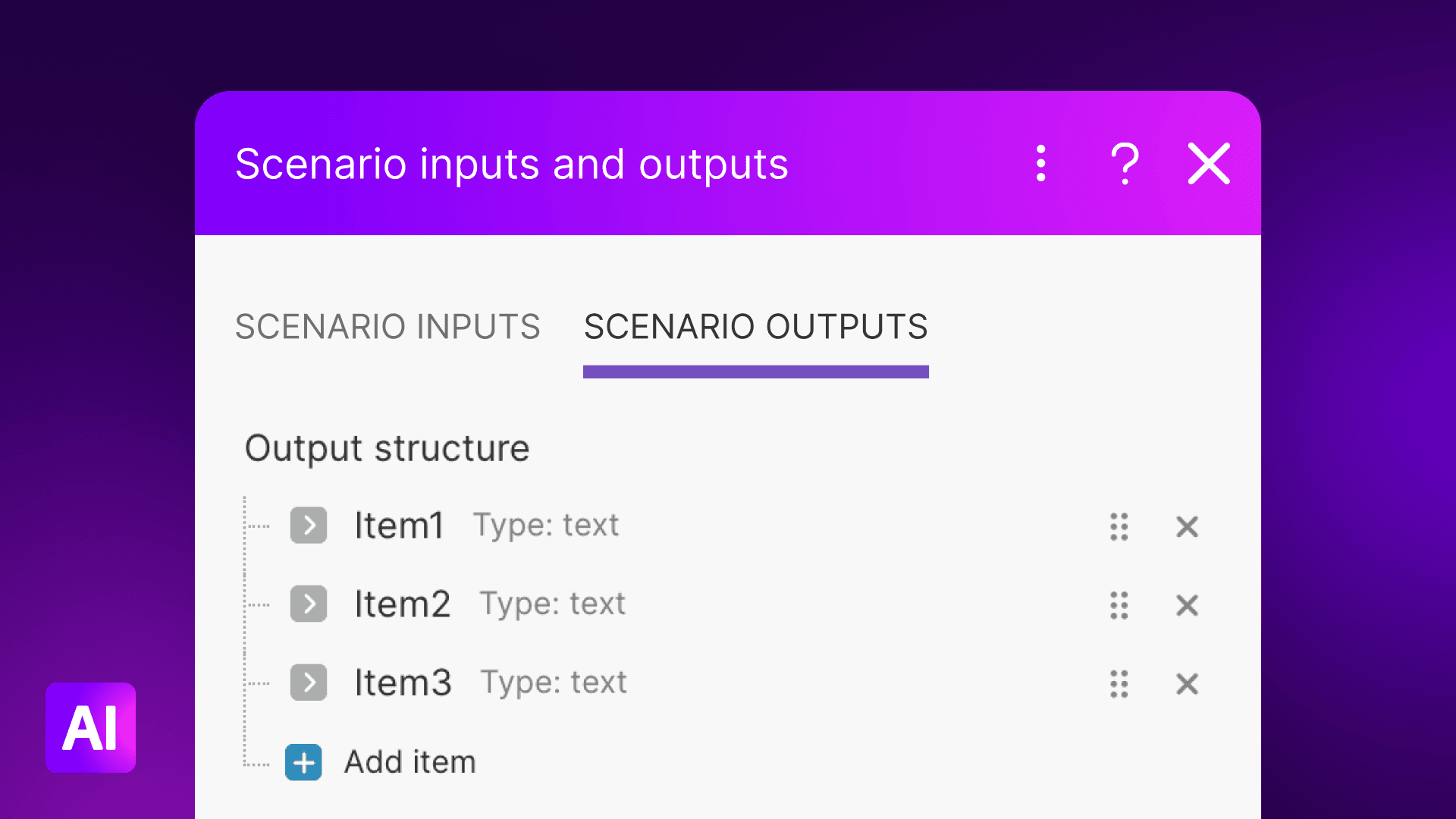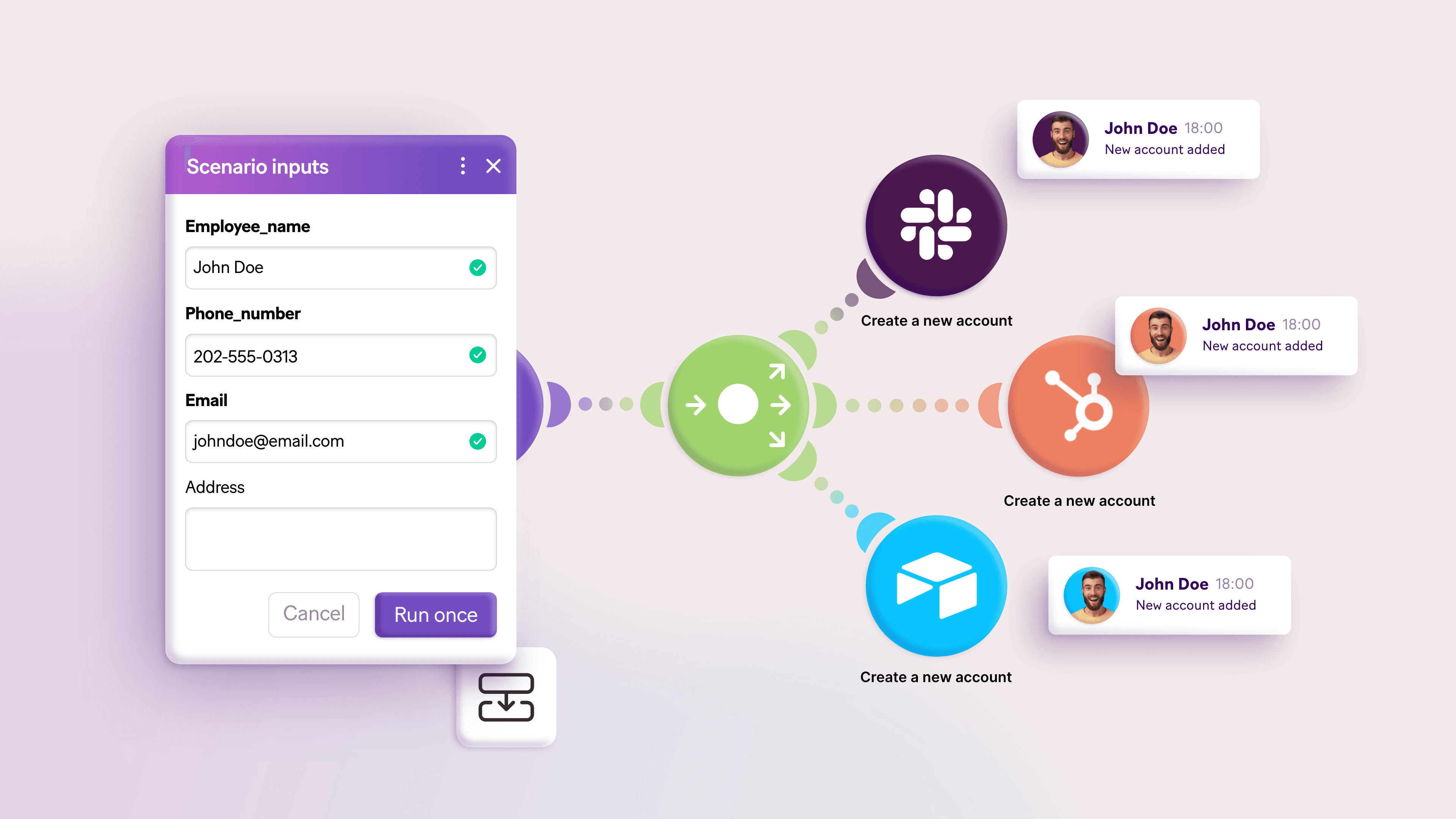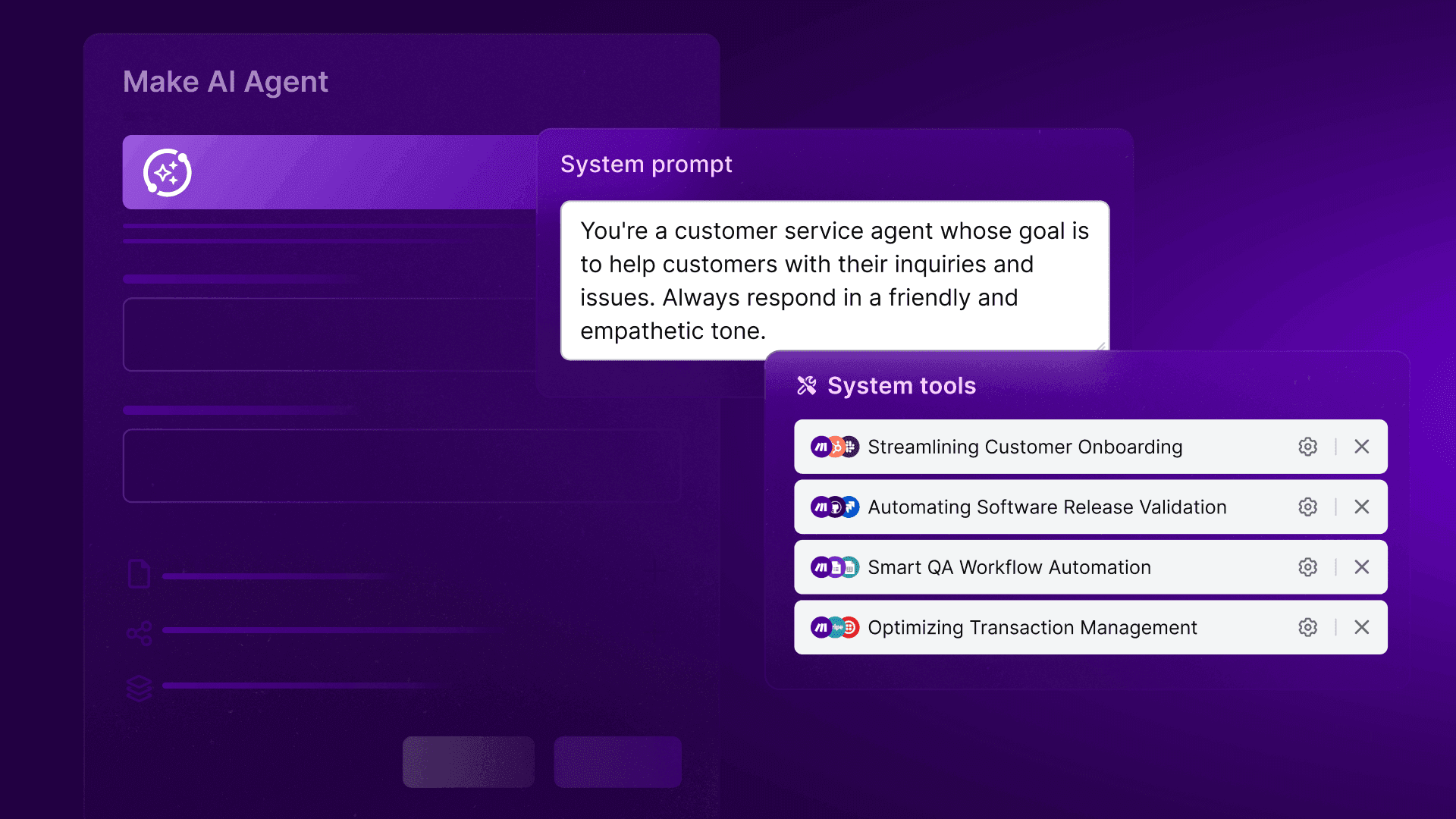May 16, 2025 | 5 minutes
Make MCP server: Give your AI agent a toolbox
Introducing a no-code way to power up your AI agents. The Make model context protocol (MCP) server, paired with other developments like scenario outputs, lets the AI of your choice wield tools autonomously. Patrik Simek, CTO of Make, explains how it works.
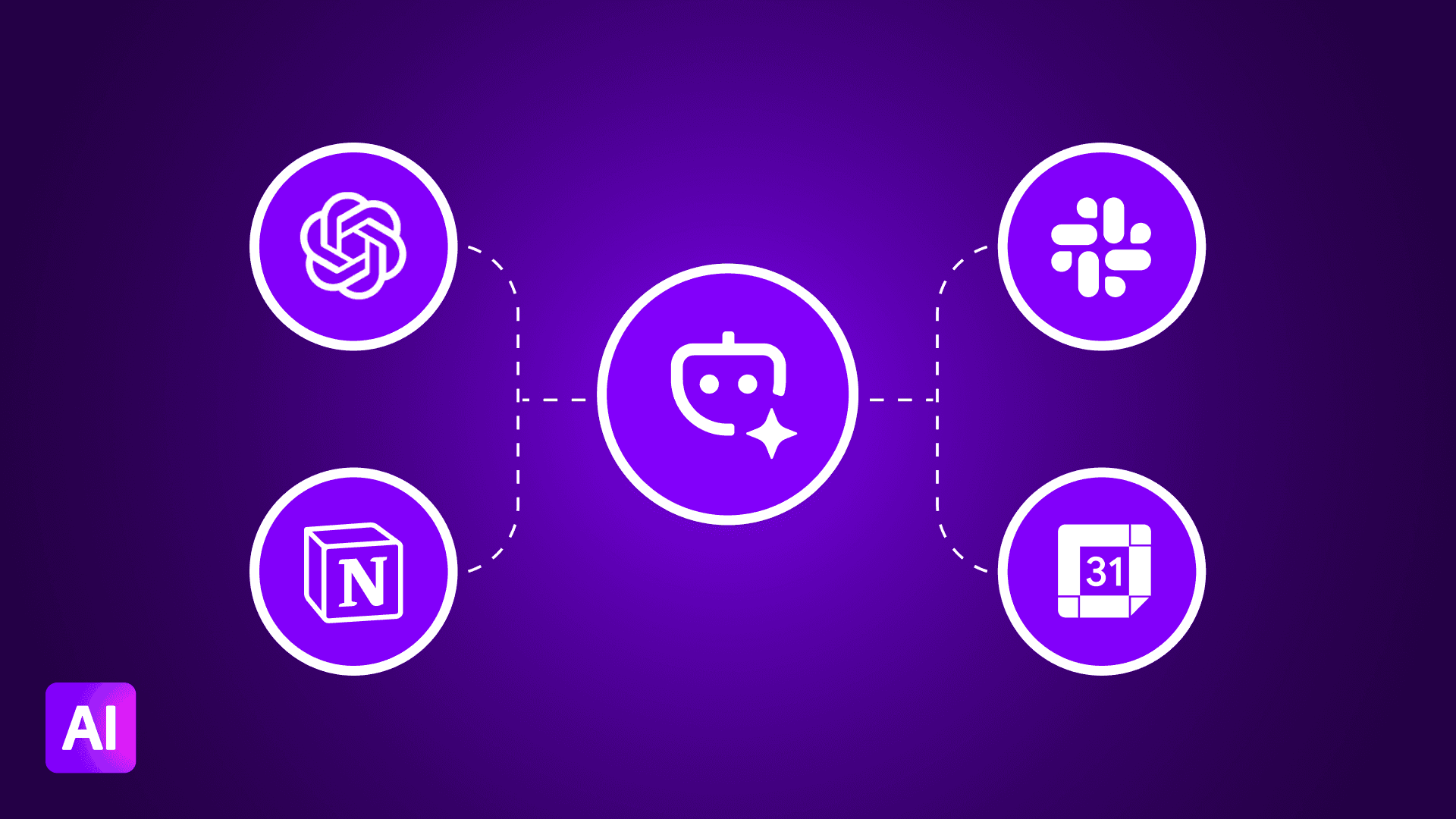
Agentic workflows are no longer a concept of the future: they’re here, and people are already using them to build smart, adaptive automation. With Make AI Agents, we made this next phase of automation accessible not just to experienced developers, but also to enthusiasts experimenting with their first agent.
Today, we’re introducing a way to make your AI even more capable: the Make model context protocol (MCP) server. This cloud-based gateway connects your AI agents to your Make scenarios through a standardized protocol – without managing API endpoints, installing local code, or maintaining infrastructure.
Let’s take a look at what this means and how you can start using it.
What is an MCP server?
Imagine there were no standardized protocols for how we interact with the web. Every time you visited a website, you’d have to choose the right browser just to view the page correctly. Sounds frustrating, right? Well, this is very much the current state of APIs: there are countless variations in how they handle authentication, data serialization and deserialization, and even how they report errors.
At Make, we’ve spent the past decade building universal connectors for thousands of APIs so you don’t have to. These connectors are designed to simplify and streamline communication between APIs, ensuring that data retrieved from one endpoint can be reliably sent to another. This approach works fine for simple workflows, but its limitations become clear as business needs grow: API documentation is often incomplete, lacking clear descriptions of parameters, valid values, or even the structure of responses.
Now, imagine asking an AI to work with an API like that. Without standardization, the underlying model would have to decipher every little detail from fragmented documentation before even attempting a request. AI is smart, but not yet that smart; AI is fast, but not yet that fast. The chances of failure would be high, and at best the process would be slow and inefficient.
That’s where MCP comes in. MCP – model context protocol – standardizes how AIs discover API endpoints, helps them understand the actions each endpoint performs, and clearly defines expected inputs and outputs. This provides your Make AI Agents with precise guidance and reduces the chance of hallucinations by limiting the variables involved in any given task. Put simply, it gives your AI tools and outlines how they work in order to increase the likelihood that they're used correctly. It's the next step in the evolution of AI automation.
But at Make, we believe MCP has the potential to become not just a universal protocol for connecting tools and services with AI for agentic purposes, but also a foundational layer for deterministic workflow automation platforms. It can significantly reduce the time and effort spent rebuilding connectors from scratch, allowing us to deliver even more connectors, faster. This frees us up to focus on what has always been our core mission: building the best no-code development platform.
MCP in Make: No infrastructure, no trust risks, no code
Applied to the Make platform specifically, our MCP server turns your Make scenarios into tools that AI agents can call upon. The server acts as a connector that tells the AI of your choice which scenarios are available, the inputs they need to run properly, and the outputs they'll produce – then lets them act on that knowledge.
Perhaps best of all, scenario discovery and execution happens in real time via cloud-based infrastructure secured by your unique Make MCP Token and Make's standard security guidelines. This alone is a huge step forward compared to existing MCP servers, most of which require local setup and manual configuration – in other words, a real need for Node, Python, or Docker know-how. By instead simply generating your token and pasting the URL into supported configuration spaces, even no-code users can safely integrate with the likes of Claude and Cursor and reap the benefits.
A few more details will round out the list of Make MCP server's current capabilities:
Detects all “on-demand” Make scenarios available in a user’s account
Returns meaningful input parameter descriptions for each scenario
Resolves dynamic parameters on the fly
Allows AI agents to trigger scenarios with valid inputs
Returns structured JSON outputs, allowing AI to interpret the results for further steps
How to use the MCP server
The Make MCP server is straightforward to set up and easy to apply to a range of situations.
How to set up the Make MCP server
Create one or more scenarios in Make. These can be simple or complex, and can use or not use AI. Each scenario should be configured with scenario outputs to structure the data your AI will receive; where necessary, you can also configure scenario inputs for your scenario.
Make your scenarios accessible by the MCP server. Each scenario that you would like to use via MCP must be set to active and on demand.
Obtain your MCP Token. Navigate to the API/MCP access section in your Make user profile. Click "Add token" and select "MCP Token" as the type. Choose a label for your MCP Token and click "Add". Copy this URL.
Go to the configuration area of your AI model. Paste your token URL. Your AI can now find your available scenarios, run them like tools, and get back real results – without any code or extra setup.
If you would like more details, visit the MCP server page in our Developer Hub.
What is MCP used for?
Once you've set up your Make MCP server, your agents can begin to help you out in a wide variety of use cases. Say you want to gather and share customer feedback using Claude. Just paste in your token, then behind the scenes Claude will query the MCP server to find tools it can use. It will find a form listing tool, run it, see the feedback form, and pull the responses.
All this is handled through structured inputs and outputs and without you needing to run any servers or download anything. It’s all handled in the cloud. And because it speaks the MCP standard, it works with AI agents like Claude, Cursor, and more.
But as our inventive users are showing, gathering customer feedback is just one example. We're already seeing our early adopters employ MCP and Make to situations like:
An AI assistant checking team capacity from a Make Data Store
Triggering a reminder, email sequence, or integration chain based on a single prompt
Connecting AI agents to customer-facing tools like form submission, data sync, and CRM updates
Next steps
Whether you're a developer building tool-based agents acting on live systems or an AI newbie just experimenting with agentic automation, MCP is the best way to connect AI with real-world tools and get the most out of both. Sign up for an account or talk to sales to get started with MCP in Make today.

